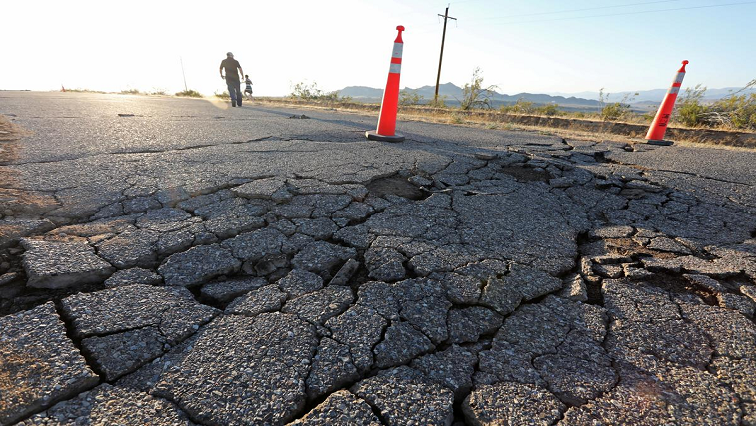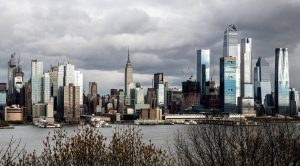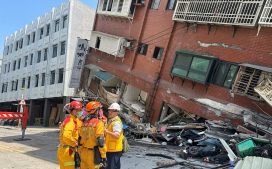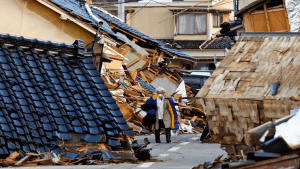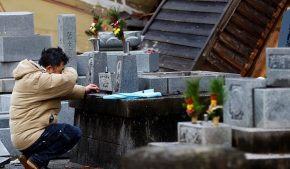High desert communities in Southern California on Saturday assessed damage and braced for potentially dangerous aftershocks from a major earthquake that shook buildings, ruptured gas lines and sparked fires near the remote epicentre of the second temblor in as many days. The powerful magnitude 7.1 earthquake rocked the Mojave Desert town of Ridgecrest south of Death Valley National Park as darkness fell on Friday, jolting the area with eight times more force than a 6.4 quake that struck the same area 34 hours earlier.
California Governor Gavin Newsom requested federal assistance and placed the state Office of Emergency Services (OES) on its highest alert.
“We do know there were a number of injuries, but most of them I would characterize in the minor to moderate level, and no reports of any fatalities, so I think we’re very lucky there,” OES Director Mark Ghilarducci said at a news conference on Saturday.
Ghilarducci said there were reports of building fires, mostly as a result of gas leaks or gas-line breaks. State officials said all roads damaged by the quakes had been repaired and reopened. Violent shaking also caused water-main breaks and knocked out power and communications to parts of Ridgecrest, home to about 27 000 people some 200km northeast of Los Angeles.
Ghilarducci said there was sure to be a significant number of aftershocks, including possible powerful ones, and advised residents to ensure they had necessary supplies.
“We want to make sure that people over the next 24 to 48 hours are prepared and cognizant of what to do should more earthquakes occur,” Ghilarducci said.
Overnight the centre of Ridgecrest was quiet, except for the occasional rumble of aftershocks. Some residents could be seen sitting on lawn chairs in the darkness outside. The garage doors of many homes were left open with a car parked on the driveway.
The sprawling US Naval Air Weapons Station China Lake just northwest of town was evacuated of all non-essential personnel following the quake. The facility, which at more than 1.1 million acres is larger than the state of Rhode Island, reported no injuries. Authorities were assessing any damage to buildings or other infrastructure, according to a post on the base’s Facebook page.
MORE TO COME
Friday’s earthquake was widely felt across Southern California, including greater Los Angeles, where shaking in some areas lasted about 40 seconds. Low-level rumbling extended as far north as the San Francisco Bay area and beyond to Reno, Nevada, and as far east as Phoenix, Arizona.
Seismologists said the initial quake on Thursday, and scores of smaller ones that followed it, proved to be foreshocks to Friday’s larger temblor, which now ranks as Southern California’s most powerful since a 7.1 quake that struck near a US Marine Corps base in the Mojave Desert in 1999. The US Geological Survey said Friday’s quake was immediately followed by at least 16 aftershocks of magnitude four or greater and warned of a 50% chance of another magnitude six quake in the coming days.
Geologists put the chance of another magnitude 7 tremor at 10% over the next week.
As of 11 a.m. on Saturday, there had been close to 600 aftershocks of 2.5 magnitude or greater in the area surrounding the epicentre, according to USGS data.
Victor Abdullatif was helping clean up broken bottles and other debris inside his father’s liquor store, the Eastridge Market, which sustained damage to its ceiling, and found the periodic aftershocks unnerving.
“They’re still scary because you almost don’t know, ‘Is this going to be a full earthquake?’ You have to kind of have faith that it’s just an aftershock,” he told Reuters.
South of Ridgecrest, there were reports of a building collapse and gas leaks in the small town of Trona, home to about 2 000 residents, Ghilarducci said.
The last major destructive quake to hit Southern California was the 6.7 magnitude Northridge quake in 1994, which struck a densely populated area of Los Angeles. It killed 57 people and caused billions of dollars in property damage. The comparatively limited damage from Friday’s quake, which packed greater force than the Northridge event, was a function of its location in a remote, less developed area.
Its ground motion, however, startled seismically jaded Southern Californians over a wide region.
Pools in Los Angeles sloshed wildly, and TV cameras at Dodger Stadium were shaking as they filmed the night Major League Baseball game between the Los Angeles Dodgers and San Diego Padres.
A television anchor woman ducked out of sight during a local newscast as shouts of “get under a desk” were heard in the background.


